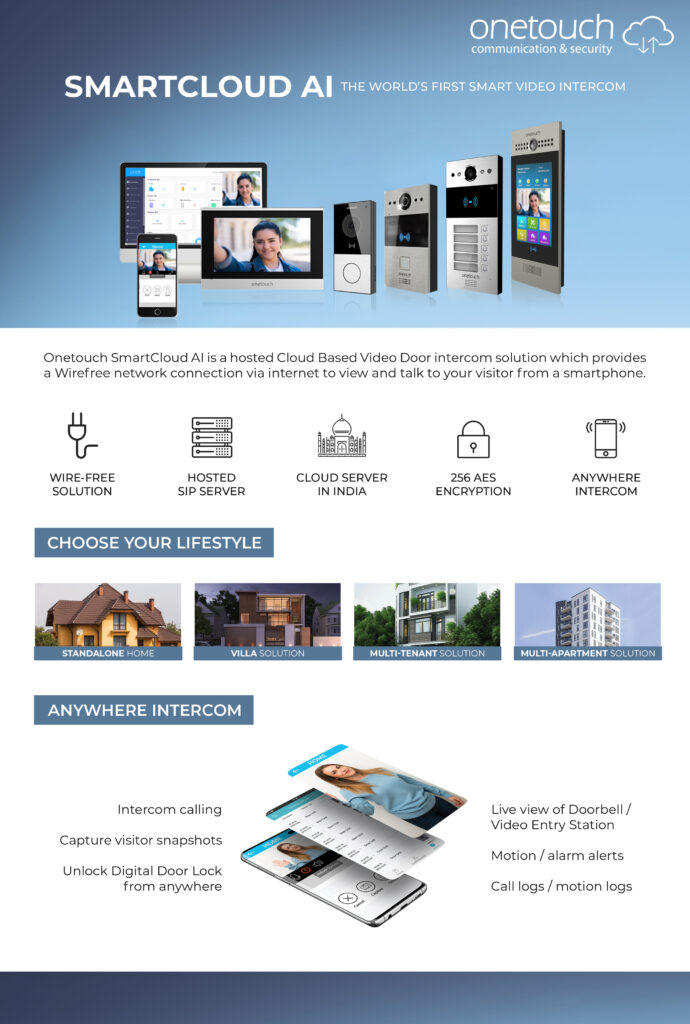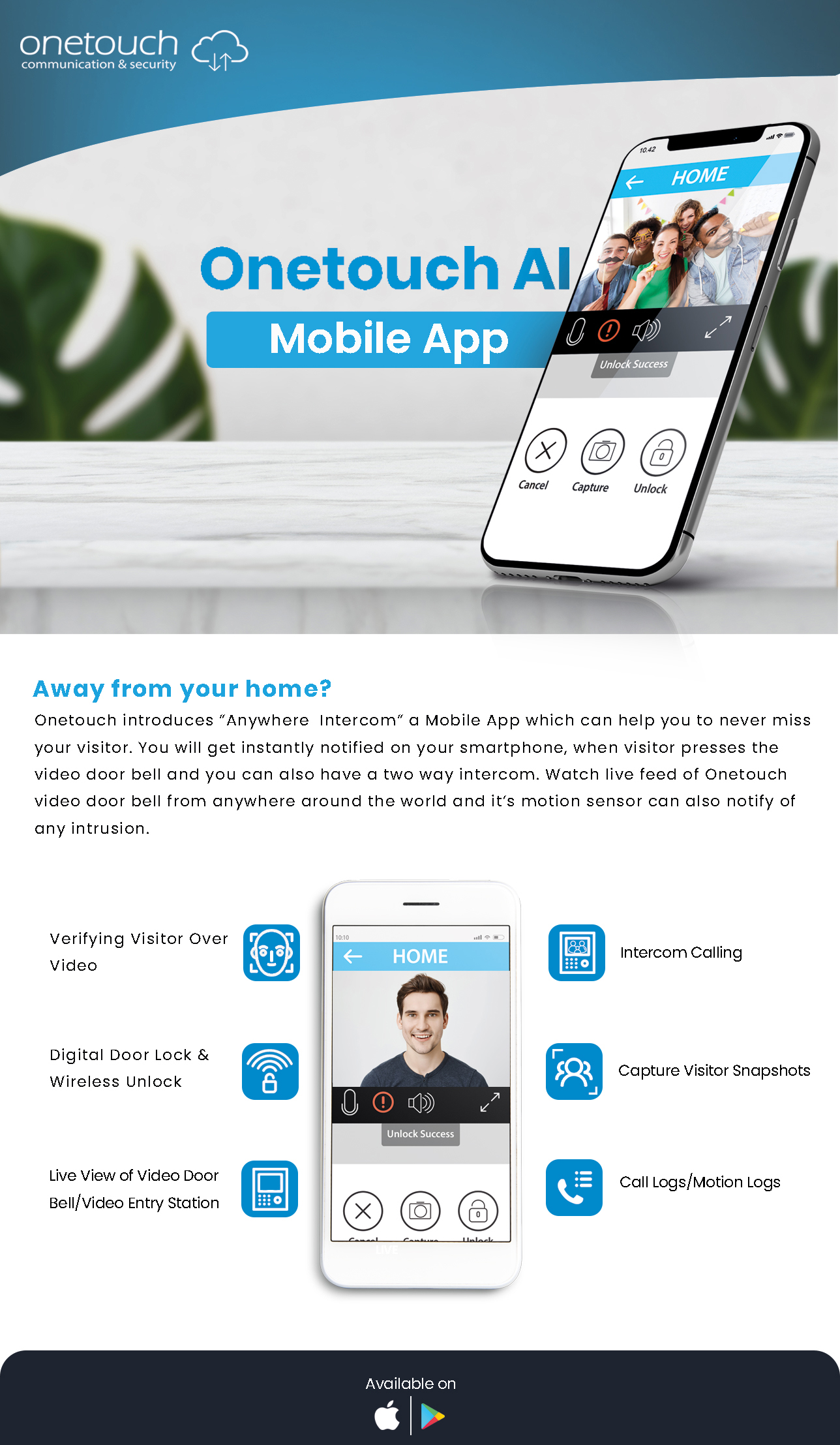Are you confident that you can quickly alert someone and get help for your family in any type of emergency? As much as we secure our homes from external threats, emergencies can strike within our four walls – a sudden medical issue, a fall, or a hidden hazard like a gas leak. In these vulnerable moments when every second counts, having a robust panic communication system becomes your family’s essential lifeline. But how do you build such a system for your household? Let’s discuss how integrating everyday safety sensors with conventional home security devices, such as a video door phone, can form a crucial safety net for your loved ones.
What Defines a Panic Communication System?
A panic communication system serves one critical purpose: to initiate instant alerts and facilitate immediate communication with family, neighbours, or designated contacts in the event of any crisis. While typically associated with specialised units like emergency panic booths or panic alert stations found in public or commercial spaces, the principles are equally vital for forming a safety net within your own four walls. Early systems used standalone buttons; today’s solutions integrate various sensors with two-way intercoms, video feeds, and smartphone alerts. Put simply, it is about having a reliable method to communicate an emergency when verbal calls might be impossible or delayed, ensuring your call for help is heard and understood swiftly.
Sensors: The Key Element of Today’s Panic Communication System
Building a robust panic alert station starts with early detection. Smart home sensors are the essential “eyes and ears” that automatically identify potential dangers and allow for immediate alerts. A gas leak detector, for instance, constantly monitors the air for dangerous gas concentrations to provide proactive safety. If a leak is detected, it instantly triggers an alert, initiating the panic communication system before anyone in the household might even be aware of the invisible threat. Then there are magnetic door contacts, which can trigger a notification if a door (like a back gate or pool exit) is opened unexpectedly. They are invaluable for detecting the movements of individuals who might wander off unsupervised. Of course, a classic panic button or pendant remains essential. These devices, often worn or kept within easy reach, enable an at-risk individual to manually trigger emergency communications during a medical emergency, a fall, or any situation where they feel threatened or need immediate help but cannot easily access a phone. With such sensors in place, you gain the ability to detect a range of hazards and emergencies within your home, both automated and manually triggered, so that you can respond without delay.
How Video Door Phones Tie into Emergency Comms Systems
While sensors detect the emergency, VDPs handle the communication part within a panic communication system. When a connected sensor is triggered, an alert is immediately sent to your video door phone’s indoor monitor and/or your linked smartphone app. Depending on the system’s setup and the type of alert (e.g., a magnetic door contact), the video door phone can indicate the location it’s coming from and may even automatically display the camera feed from the relevant outdoor unit, allowing you to see if it is an intrusion alert. More importantly, the video door phone facilitates immediate two-way communication. Suppose an elderly parent has pressed a panic button. In that case, you can receive the alert via the companion app on your phone and instantly initiate a call through the app to the indoor monitor or a designated contact. You can then speak to them directly and assess the situation to determine the best course of action. Thus, video door phones can serve not just as a simple visitor management tool but also as a vital communication node for any emergency panic booth, providing reassurance when it matters most.
Onetouch Video Door Phones – Learn More.
See How All of It Can Protect Your Family Day-to-Day
Understanding the components is one thing, but seeing how a well-integrated panic communication system works in real-life scenarios is another. Suppose you’re at work, and your elderly parent, home alone, suddenly feels sick. With the press of an emergency push button, they can send an immediate alert to your smartphone. You can then instantly initiate a call through the video door phone app to their indoor monitor, check on them, and quickly dispatch help if needed. Another scenario: Your curious toddler is playing near a door leading to the garden or garage. A magnetic door contact on that door instantly triggers an alert on your VDP monitor and smartphone. You can see which door was opened and quickly intervene, preventing them from wandering. It can also enable you to respond promptly to intrusions without guessing. Conversely, a connected gas leak detector in the kitchen can sense the danger before it becomes apparent. In such situations, you can call emergency services or neighbours to potentially avert a major accident, even if you’re away from home.
Build Your Family’s Safety Net with Onetouch
Building a comprehensive panic communication system is investing in your family’s safety and peace of mind. As we’ve discussed, it goes beyond simple alarm units and requires the integration of smart sensors with a robust communication hub, all of which must reliably work in tandem to aid your loved ones in various emergencies. Consider Onetouch as your partner in building this essential system. We offer the core components, including all the crucial wired and wireless sensors discussed above, as well as motion detectors and occupancy sensors, necessary for a comprehensive home setup. They all integrate seamlessly with our video door phone solutions and smartphone app. Our expertise extends even further with dedicated solutions, such as the Onetouch Emergency Panic Booth and Panic Alert Station, for broader industries, ensuring help is available just a call away.
FAQs
1. How are all the devices typically powered in this integrated system?
Panic booth panels and video door phones are typically wired for power or utilise PoE (Power over Ethernet). Wireless sensors are battery-powered, designed for long life with low-battery alerts to ensure continuous functionality.
2. Can Onetouch emergency systems be expanded later down the road?
Yes, a key advantage of modular, SIP-compliant systems is scalability. You can add more compatible Onetouch sensors or devices to your existing panic communication system as your needs change over time.
3. Can I customise who receives alerts from the panic alert station?
Modern systems enable users to designate multiple contacts, such as family members, neighbours, or monitoring services, to receive mass notifications from specific sensors via the app or other methods.
4. What happens if the internet connection is lost? Will the communication system still work?
Basic functions, such as local alarms (siren), will still work. However, remote notifications to smartphones and off-site communication through the video door phone will require setting up backup power and internet connectivity.








